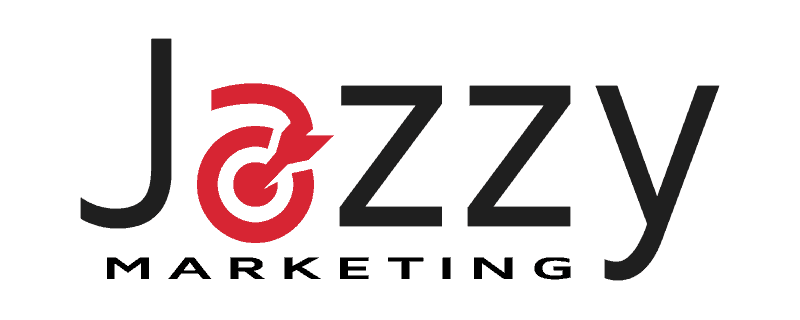Introduction to SEO for SMBs: SEO plays a crucial role in the success of small businesses. By improving online visibility, SEO helps attract organic web traffic, which can lead to increased sales and brand recognition. SEO involves optimizing a website to rank higher on search engine results pages. This includes using relevant keywords, building high-quality backlinks, and ensuring a mobile-friendly site. Small business owners should understand the importance of SEO and how it can impact their growth. Continue reading for practical tips and insights on implementing effective SEO strategies.
Introduction to SEO for SMBs
What is SEO?
Definition and key components
Search Engine Optimization (SEO) involves enhancing a website to achieve higher rankings on search engine results pages. Key components include keyword research, on-page optimization, off-page optimization, and technical SEO. Each component contributes to improving a website’s visibility and user experience.
Difference between SEO and SEM
SEO focuses on organic search results, while Search Engine Marketing (SEM) includes paid advertising. SEO aims to improve a website’s natural ranking through content and technical improvements. SEM involves paying for ads to appear in search results. Both strategies can increase visibility, but SEO offers long-term benefits without ongoing costs.
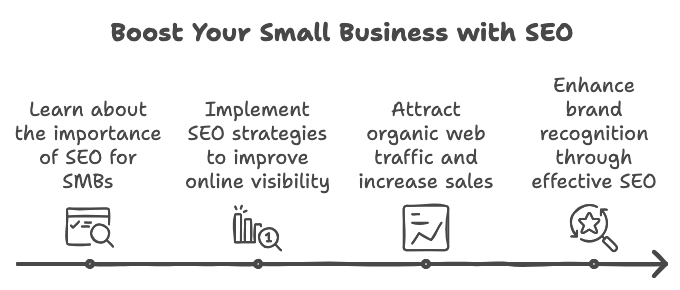
Why SEO Matters for Small Businesses
Increased visibility and traffic
SEO helps small businesses appear in search results when potential customers look for relevant products or services. Higher visibility leads to increased website traffic. More traffic can result in more sales and customer engagement.
Cost-effectiveness compared to paid advertising
SEO provides a cost-effective alternative to paid advertising. While paid ads require continuous investment, SEO efforts can yield long-lasting results. Small businesses can achieve sustainable growth by investing in SEO.
How Search Engines Work
Crawling and indexing
Search engines use bots to crawl websites and gather information. These bots follow links and read content to understand each page’s relevance. After crawling, search engines index the content, making it available for search queries.
Ranking algorithms
Search engines use complex algorithms to rank indexed pages. Factors like keyword relevance, backlinks, and user experience influence rankings. Websites that meet these criteria rank higher, attracting more organic traffic.
Benefits of SEO for Small Businesses
Enhanced Online Presence
Local SEO advantages
Local SEO helps small businesses appear in search results for nearby customers. This increases foot traffic and sales for brick-and-mortar stores. Customers often search for services and products near their location. Local SEO ensures that businesses show up in these searches. This strategy includes optimizing Google Business Profiles and using location-based keywords.
Building brand credibility
SEO builds brand credibility by improving search rankings. Higher rankings signal trustworthiness to potential customers. Quality content and backlinks from reputable sites enhance credibility. Consistent SEO efforts help establish a strong online reputation. Customers are more likely to choose businesses that appear at the top of search results.
Improved User Experience
Faster website load times
Fast website load times improve user experience. Search engines prioritize fast-loading websites in search results. Slow websites frustrate users and increase bounce rates. Optimizing images and using efficient coding practices speed up websites. Regular performance checks ensure that websites remain fast and responsive.
Mobile optimization
Mobile optimization is crucial for user experience. Most users access websites from mobile devices. Mobile-friendly websites rank higher in search results. Responsive design ensures that websites look good on all devices. Mobile optimization includes easy navigation and quick load times. This improves user satisfaction and engagement.
Higher Conversion Rates
Targeted traffic
SEO attracts targeted traffic by using relevant keywords. This means that visitors are more likely to be interested in the products or services offered. Targeted traffic leads to higher conversion rates. Businesses can tailor content to match the needs of their audience. This increases the chances of turning visitors into customers.
Better engagement metrics
Better engagement metrics result from effective SEO. Engaged visitors spend more time on websites and explore multiple pages. High engagement signals to search engines that the content is valuable. This improves search rankings and attracts more visitors. Businesses can track engagement metrics using tools like Google Analytics. This data helps refine SEO strategies for better results.
Steps to Implement SEO
Keyword Research
Identifying relevant keywords

Keyword research forms the foundation of any successful SEO strategy. Small business owners need to identify relevant keywords that potential customers use to search for products or services. Start by brainstorming a list of terms related to the business. Use tools like Google Keyword Planner to find popular search terms. Focus on long-tail keywords, which are more specific and less competitive.
Using keyword research tools
Several tools can assist in finding the best keywords. Google Keyword Planner provides insights into search volume and competition. SEMrush offers comprehensive data on keyword difficulty and competitor analysis. Ahrefs helps discover keyword opportunities and track rankings. These tools enable small businesses to target the right audience effectively.
On-Page SEO
Optimizing meta tags and headers

On-page SEO involves optimizing elements within the website. Meta tags and headers play a crucial role in this process. Meta titles should include primary keywords and accurately describe the page content. Meta descriptions should be concise and compelling, encouraging users to click. Headers (H1, H2, H3) should organize content logically and incorporate relevant keywords.
Creating high-quality content
Content quality significantly impacts SEO performance. High-quality content engages readers and provides value. Blog posts, articles, and product descriptions should be informative and well-written. Use keywords naturally within the content. Avoid keyword stuffing, which can harm rankings. Regularly update content to keep it fresh and relevant.
Off-Page SEO
Building backlinks
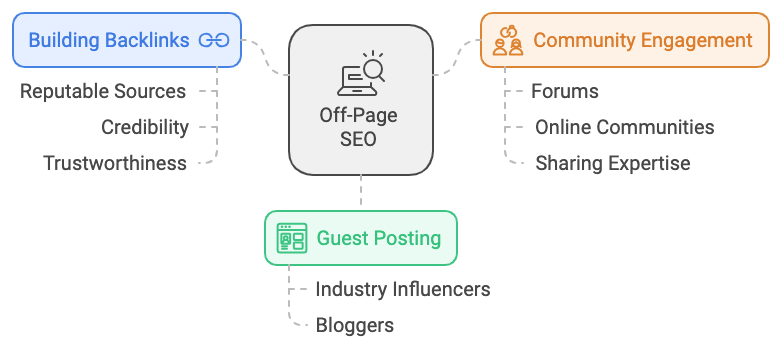
Off-page SEO focuses on activities outside the website. Building backlinks from reputable sources enhances credibility. High-quality backlinks signal to search engines that the website is trustworthy. Reach out to industry influencers and bloggers for guest posting opportunities. Participate in forums and online communities to share expertise and gain backlinks.
Social media engagement
Social media platforms offer excellent opportunities for off-page SEO. Engage with the audience on platforms like Facebook, Twitter, and Instagram. Share valuable content and interact with followers. Social media engagement drives traffic to the website and improves brand visibility. Encourage satisfied customers to leave positive reviews and share their experiences.
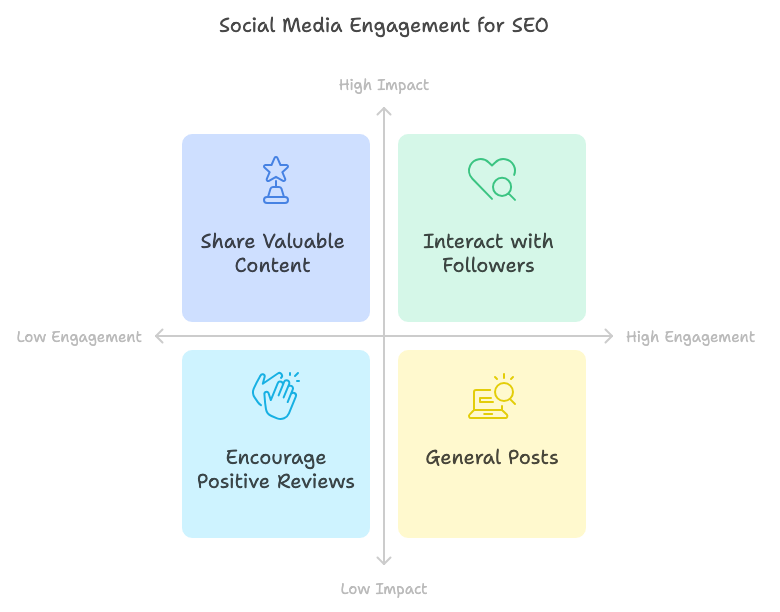
Technical SEO
Ensuring website security (HTTPS)
Website security plays a vital role in SEO. HTTPS (Hypertext Transfer Protocol Secure) ensures that data exchanged between the user and the website remains encrypted. Search engines prioritize secure websites in search results. Users trust websites with HTTPS, leading to higher engagement rates.
To implement HTTPS, obtain an SSL certificate from a trusted Certificate Authority (CA). Install the certificate on the web server. Update internal links to use HTTPS. Ensure that all external resources, such as images and scripts, also use HTTPS. Regularly check the SSL certificate’s validity to maintain security.
Improving site speed
Site speed significantly impacts user experience and SEO rankings. Faster websites provide a better user experience, reducing bounce rates. Search engines favor websites with quick load times, resulting in higher rankings.
Several strategies can improve site speed:
Optimize images: Compress images without compromising quality. Use appropriate file formats like JPEG for photos and PNG for graphics.
Minimize HTTP requests: Reduce the number of elements on each page. Combine CSS and JavaScript files to decrease the number of requests.
Leverage browser caching: Enable browser caching to store static files locally on users’ devices. This reduces load times for returning visitors.
Use a Content Delivery Network (CDN): Distribute content across multiple servers worldwide. CDNs deliver content from the nearest server, speeding up load times.
Enable compression: Use Gzip or Brotli to compress files. This reduces the size of HTML, CSS, and JavaScript files, improving load times.
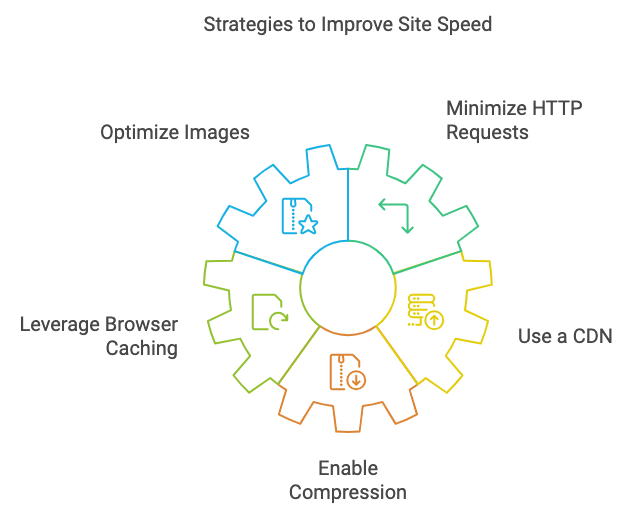
Regularly monitor site speed using tools like Google PageSpeed Insights and GTmetrix. These tools provide insights and recommendations for further optimization. Implementing these strategies will enhance user experience and boost SEO performance.
Essential SEO Tools
Keyword Research Tools
Google Keyword Planner
Google Keyword Planner helps identify relevant keywords for SEO. This tool provides data on search volume and competition. Small business owners can use this information to target the right audience. Google Keyword Planner also suggests new keywords based on existing ones. This feature helps expand keyword lists for better optimization.
SEMrush
SEMrush offers comprehensive keyword research capabilities. This tool analyzes keyword difficulty and competitor performance. SEMrush provides insights into which keywords competitors rank for. This information helps businesses find opportunities to outrank competitors. SEMrush also tracks keyword rankings over time. This feature allows continuous monitoring of SEO progress.
Analytics Tools
Google Analytics
Google Analytics tracks website performance and user behavior. This tool provides data on traffic sources, user demographics, and engagement metrics. Small business owners can use this information to refine SEO strategies. Google Analytics also offers insights into which pages perform best. This information helps optimize content for better results.
Moz
Moz offers a suite of analytics tools for SEO. This platform provides data on domain authority, backlinks, and keyword rankings. Moz also offers a site audit feature to identify technical SEO issues. This information helps improve website performance and search rankings. Moz’s keyword explorer tool aids in finding high-potential keywords. This feature enhances keyword research efforts.
Technical SEO Tools
Google Search Console
Google Search Console monitors and maintains website presence in search results. This tool provides data on indexing status and search queries. Google Search Console also identifies technical issues affecting SEO. This information helps fix problems that hinder search rankings. The tool also offers insights into how Google views the website. This feature aids in optimizing content and structure.
Screaming Frog
Screaming Frog is a website crawler that identifies technical SEO issues. This tool analyzes website elements like meta tags, headers, and links. Screaming Frog helps find broken links and duplicate content. This information aids in improving website structure and performance. The tool also provides data on page load times and other technical factors. This feature helps optimize websites for better search rankings.
Common SEO Questions
How long does it take to see results?
Factors affecting SEO timelines
Several factors influence the time required to see SEO results. The website’s current state plays a significant role. Websites with technical issues or poor content may take longer to improve. The level of competition in the industry also affects timelines. Highly competitive niches require more effort and time. The quality and quantity of backlinks impact SEO progress. High-quality backlinks from reputable sources accelerate improvements.
Realistic expectations
Setting realistic expectations is crucial for SEO success. SEO is not an overnight solution. Small business owners should expect to see initial results within three to six months. Full benefits may take up to a year or more. Consistent efforts yield the best outcomes. Regularly updating content and building backlinks contribute to long-term success. Patience and persistence are essential for achieving sustainable growth.
Can I do SEO myself or should I hire a professional?
Pros and cons of DIY SEO
DIY SEO offers several advantages. Small business owners save money by handling SEO themselves. Learning SEO skills provides valuable knowledge for future use. DIY SEO allows complete control over strategies and implementation. However, DIY SEO has drawbacks. It requires significant time and effort. Small business owners may lack expertise in advanced techniques. Mistakes can harm search rankings and credibility.
When to consider hiring an expert
Hiring an SEO professional offers distinct benefits. Experts possess specialized knowledge and experience. They can identify and fix technical issues quickly. Professionals stay updated with the latest SEO trends and algorithms. Hiring an expert saves time, allowing business owners to focus on core activities. Consider hiring an expert if the website faces complex SEO challenges. Large-scale projects or highly competitive industries benefit from professional assistance.
What are the most common SEO mistakes?
Avoiding keyword stuffing
Keyword stuffing is a common SEO mistake. Overloading content with keywords harms readability and user experience. Search engines penalize websites for keyword stuffing. Focus on natural keyword integration. Use keywords where they fit contextually. Prioritize high-quality content that provides value to readers. Tools like Ahrefs and Semrush help find the right balance of keywords.
Importance of regular updates
Regular updates are vital for maintaining SEO performance. Outdated content loses relevance and ranking potential. Search engines favor fresh, updated content. Regularly review and update existing content. Add new information and insights to keep it relevant. Monitor website performance using tools like Google Analytics and Google Search Console. Address technical issues promptly to maintain optimal performance.
SEO holds immense importance for small businesses. Effective SEO strategies can significantly enhance online visibility and drive organic traffic. Small business owners should start implementing SEO techniques immediately. Investing in SEO remains relatively inexpensive and accessible. Staying updated with SEO trends ensures continued growth and success. Regularly monitor and adjust strategies to maintain optimal performance. Remember, SEO is a long-term investment that pays off with persistent effort and dedication.
